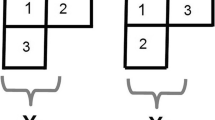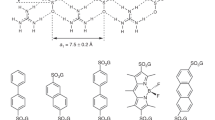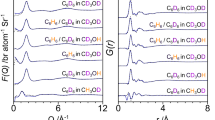Abstract
THE crystal structure of p-benzoquinone has recently been studied by W. A. Caspari1 by X-ray methods. The crystal belongs to the monoclinic system and is assigned by Caspari to the space-group C52h; there are two molecules in the unit cell, the molecules possessing a centre of symmetry. His X-ray measurements are not sufficient to determine uniquely the orientations of the molecules in the unit cell. However, by combining his X-ray data with certain considerations concerning the crystal habit and the dimensions of the molecules, he concludes that the molecular planes are parallel to (201) and that the lines joining the two oxygen atoms of the molecule lie in the (010) plane. This orientation of the molecules secures a large concentration of the oxygen atoms in the (201) plane, which concentration, according to Caspari, will account for the exceptional development in the crystal of so peculiar a face as (201).
This is a preview of subscription content, access via your institution
Access options
Subscribe to this journal
Receive 51 print issues and online access
$199.00 per year
only $3.90 per issue
Buy this article
- Purchase on Springer Link
- Instant access to full article PDF
Prices may be subject to local taxes which are calculated during checkout
Similar content being viewed by others
References
Proc. Roy. Soc., A, 136, 82; 1932.
See P. Groth, "Chemische kristallographie", vol. 4, p. 140.
Author information
Authors and Affiliations
Rights and permissions
About this article
Cite this article
KRISHNAN, K., BANERJEE, S. Orientations of Molecules in the p-Benzoquinone Crystal. Nature 131, 653–654 (1933). https://doi.org/10.1038/131653a0
Issue Date:
DOI: https://doi.org/10.1038/131653a0
This article is cited by
Comments
By submitting a comment you agree to abide by our Terms and Community Guidelines. If you find something abusive or that does not comply with our terms or guidelines please flag it as inappropriate.



